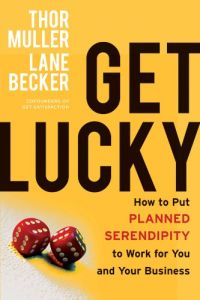Join getAbstract to access the summary!

Join getAbstract to access the summary!
Thor Muller and Lane Becker
Get Lucky
How to Put Planned Serendipity to Work for You and Your Business
Jossey-Bass, 2012
What's inside?
Lucky people make their own luck, and so do lucky organizations.
Recommendation
In 1945, engineer Percy Spencer was working with magnetrons, electronic devices that create microwave radio signals. As he stood next to a functioning magnetron, Spencer felt the chocolate bar in his pocket suddenly soften to a gooey consistency. He deduced that the microwaves emanating from the magnetron had melted his candy. This serendipitous insight led to the invention of the microwave oven. Entrepreneur Thor Muller and Lane Becker, both web experts and customer satisfaction consultants, explain why serendipity matters to your business and how you can spark happenstance in your organization. Their pleasant tone of voice and easy way with complex concepts make for a delightful read. Although waiting for serendipity to pass through your organization may prove as fruitless as anticipating a visit from Godot, you can foster a work environment that supports good fortune, allowing you to grasp hold of it – if it occurs. getAbstract recommends this original treatise to readers who want to turbocharge their organization’s serendipity and reap the benefits of good fortune.
Summary
About the Authors
Thor Muller and Lane Becker co-founded Get Satisfaction, a customer engagement platform. Muller is a serial entrepreneur. Becker co-founded Adaptive Path, a user-experience design firm.
















Comment on this summary